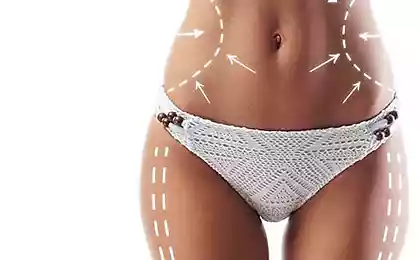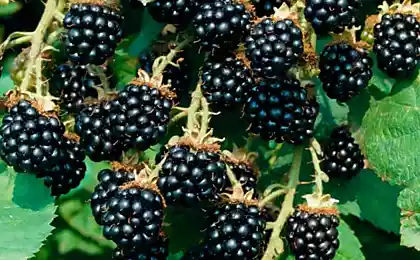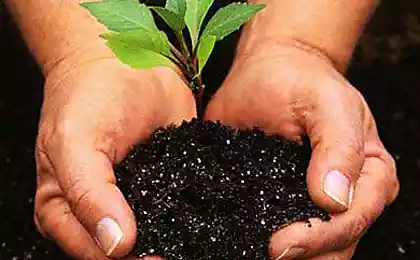584
Kelp. Beauty and alternative medicine
Kelp (seaweed) is very popular in alternative medicine. It is considered a useful medicinal plant used both topically and inside. Kelp grows underwater and in some cases gets brown. In the modern world kelp has gained considerable popularity. Science currently knows nothing about negative reactions to kelp. It is used in Spa therapies. Kelp is used for relieving the symptoms and preventing various diseases. It contains iodine, which is necessary for the person, but can be harmful if excessive consumption. We should not forget that treatment can be administered only by a doctor and seaweed, although it is considered a very useful medicine is not.
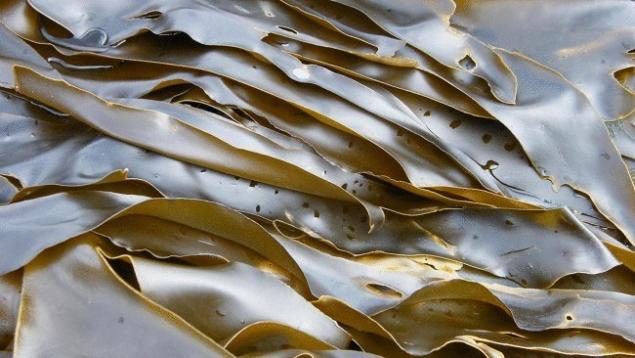
However, because of clear results of studies on its impact on the human body at the moment, it should be used with caution and only after consulting with a specialist. Resource Home Remedies for you been reviewed the properties of seaweed that make grown in sea water with kelp so popular in alternative medicine.
Kelp is a common component of cosmetic creams, lotions and masks for face. Mask for face on the basis of laminaria are widely known and are an excellent means of cleansing from dead skin. They also increase the plasticity of the skin. Adding seaweed to the diet increases fiber content in food.
The kelp contains iodine and fucoidan. Iodine helps to normalize cellular metabolism. Fucoidan boosts the immune system. Kelp also contains a number of vitamins — A1, B1, B2, B6, B12, C, E, K and Pantothenic, folic and nicotinic acid.
Seaweed is also very rich in minerals. It contains sodium, potassium, phosphorus, iron, zinc, magnesium and manganese. It is also a natural source of calcium. It is among those products that connoisseurs of a healthy lifestyle give truly magical properties.
The benefits of kelp for health
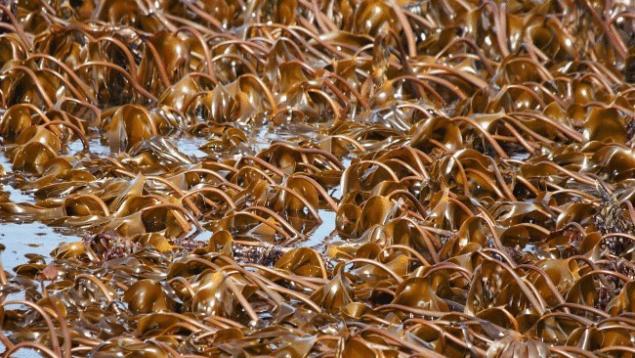
It is believed that kelp helps with fatigue, alleviates menstrual symptoms, useful in hypothyroidism, cough, asthma, hemorrhoids, headaches and stomach ailments.
Seaweed helps to prevent the development of goiter, which is a consequence of improper functioning of the thyroid gland, the cause of which is often a lack of iodine.
Contained in kelp vitamin B12 is extremely rare in vegetables, and this fact makes it an important addition to the diet of the supporters of the vegetarian diet, which is generally required additionally to consume vitamin B12.
Although the scientific evidence for this little, brown kelp is also considered to have the ability to prevent cancer. Use of laminaria has shown some results in reducing the incidence of cancer associated with estrogen.
This variety of kelp that contains fucoidan also has the ability of weakening of inflammatory processes. According to several reports, fucoidan is capable of preventing breast cancer.
Brown kelp also has krivorozchskiy due to the anticoagulant properties of fucoidan qualities. Any statistics on this question are not collected.
It is believed that seaweed removes toxins from the body and improves health of the gastrointestinal tract.
This plant is also used in water procedures used to treat obesity, cellulite and rheumatism. Bathing and wrapping the body with fresh kelp is known for its slimming properties. Seaweed is considered a herb that helps to overcome obesity. In combination with other botanicals, kelp is used to treat cellulite.
Contained in kelp minerals also act as diuretics, allowing you to excrete the excess fluid.
It softens also the manifestations of diseases such as psoriasis and eczema. Scientists M. Shirosaki (Shirosaki M.) and T. Koyama (Koyama T.) suggested that kelp has the ability to prevent obesity and diabetes.
It is believed that the use of kelp makes you more energetic and increases mental activity.
Nutritional value of kelp
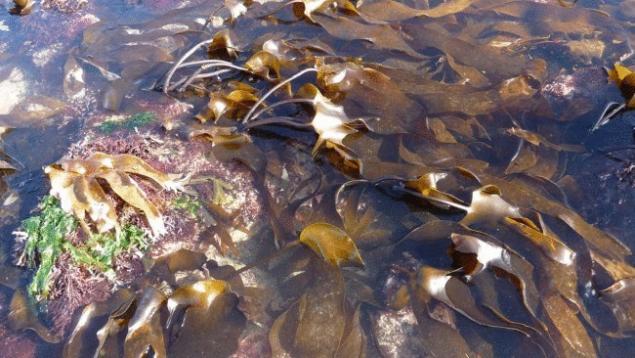
Resource The Titi Tudorancea Bulletin was given the details of the nutritional value of kelp (Laminaria spp.) based on 100 grams.
Water — 81,580 grams;
Energy value — 43,000 kilocalories (180 kilojoules);
Protein — 1,680 grams;
All lipids (fats) — 0,560 grams;
Ash (from 100 grams of kelp) — 6,610 grams;
Carbohydrates — 9,570 grams;
Fiber, part of the food — 1,300 grams;
Sugar (total) — 0,600 gram;
Calcium (Ca) — 168,000 milligrams;
Iron (Fe) — 2,850 milligrams;
Magnesium (Mg) — 121,000 milligrams;
Phosphorus (P) — 42 milligrams;
Potassium (K) — 89,000 milligrams;
Sodium (Na) — 233 milligrams;
Zinc (Zn) — 1,230 milligrams;
Copper (Cu) — 0,130 milligrams;
Manganese (Mn) — 0,200 milligrams;
Selenium (Se) — 0,700 micrograms;
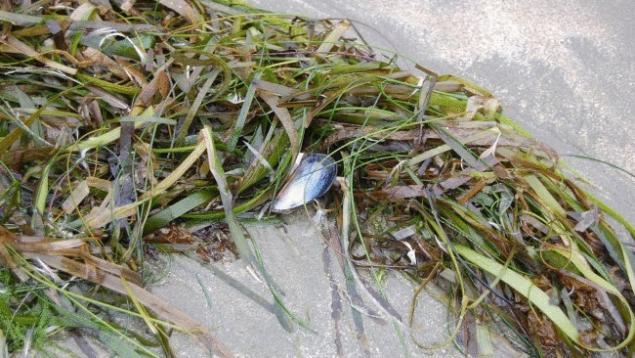
Vitamin C (total ascorbic acid) — 3,000 milligrams;
Thiamine — 0,050 milligrams;
Riboflavin — 0.150 milligrams;
Nicotinic acid — 0,470 milligrams;
Pantothenic acid — 0,642 milligrams;
Vitamin B6 — 0.002 milligrams;
Folate is 180 micrograms;
Choline (vitamin B4) — 12,800 micrograms;
Vitamin a — 116 international units;
Vitamin E (alpha-tocopherol) — 0,870 milligrams;
Vitamin K (phylloquinone), the richest source of which is sage — 66,000 micrograms;
Fatty acids (total saturated) — 0,247 grams;
Saturated fatty acids 14:0 — 0.031 grams;
Saturated fatty acids 16:0 — 0,110 grams;
Saturated fatty acids 18:0 — 0.086 gram;
Monounsaturated fatty acids (total) — 0,098 grams;
Monounsaturated fatty acids 16:1 — 0,004 grams;
Monounsaturated fatty acids 18:1 — 0.086 gram;
Polyunsaturated fatty acids (total) — 0,047 grams;
Polyunsaturated fatty acids 18:2 — 0.020 grams;
Polyunsaturated fatty acids 18:3 — 0,004 grams;
Polyunsaturated fatty acid 18:4 — 0,004 grams;
Polyunsaturated fatty acids 20:4 — 0,012 grams;
Polyunsaturated fatty acids 20:5 n-3 — 0,004 grams;
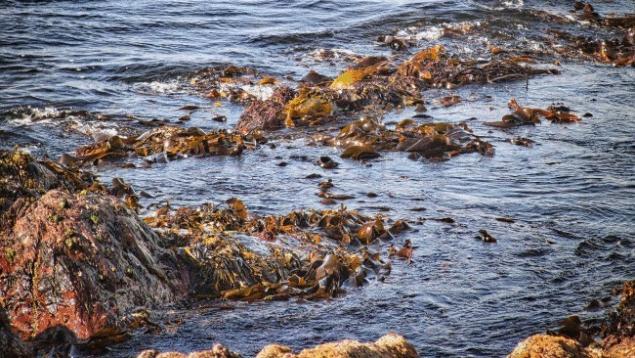
Tryptophan — 0.048 grams;
Threonine — of 0.055 grams;
Isoleucine — 0,076 grams;
Leucine — 0,083 grams;
Lysine — 0,082 gram;
Methionine — 0,025 grams;
Cystine — 0,098 grams;
Phenylalanine — 0.043 grams;
Tyrosine — 0.026 per gram;
Valine — 0,072 grams;
Arginine — to 0.065 of a gram;
Histidine — 0,024 grams;
Alanine — 0,122 grams;
Aspartic acid — 0.125 gram;
Glutamic acid — 0,268 grams;
Glycine — 0.100 grams;
Proline — 0,073 grams;
Serine — 0,098 grams;
Beta-carotene, which are abundant lettuce is 70,000 micrograms.
published
P. S. And remember, only by changing their consumption — together we change the world! ©
Source: hi-news.ru
Forecast for the development of robotics from Robohunter
White graphene: the future of cooling systems
